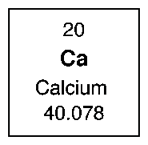The total amount of matter is called?
Mass
Atom
____________ measures the average kinetic energy in a substance.
Temperature
_____________ is an example of a chemical change.
A- Food rotting
B- Paper ripping
C- Sublimation
D- Thermal Energy
A- Food Rotting
Kinetic Energy is the measure of
A- motion
B- chemicals
C- potential
D- Change
A- Motion
The total amount of space an object occupies is called?
Volume
When atoms chemically combine they form?
A- compounds
B- Electrons
C- Mixtures
D- Solids
A- Compounds
Which item is a mixture?
A- Gold
B- Potassium Iodine
C- Water
D- Kool-Aid
D- Kool- Aid
___________ cannot be created during a physical or chemical reaction.
Mass
A- The reaction will stop
B- The reaction will slow down
C- The reaction will speed up
D- Nothing will change
C- The reaction will speed up
__________=Mass divided by volume, =d/v
Density
An example of a physical change is
A- Solubility
B- Gas being created
C- Color Change
D- Temperature Change
True or False:
After I mix baking soda and vinegar a gas is produced showing that a chemical reaction has taken place. After the substance is done fizzing, I run it through a filter and I will have vinegar and baking soda again.
False
Which phase change requires thermal energy?
A- Condensation
B- Freezing
C- Deposition
D- Evaporation
D- Evaporation
To measure the mass of an object we will use a:
a- graduated cylinder
b- triple beam balance
c- thermometer
d- spring scale
b- triple beam balance
A- The number of electrons
B- The number of protons
C- The number of neutrons
D- The number of isotopes
B- The number of protons
When liquid water is heated it will become a gas. What is the name of the physical change it undergoes?
A- Condensation
B- Evaporation
C- Sublimation
D- Deposition
B- Evaporation
If I burn a log the ash remaining will have a lower mass. Where did the mass go?
It escaped as a gas
Valence electrons are important because they
A- participate in chemical bonding
B- provide a negative charge to the atom
C- Predict how many protons will be in the atom
D- Provide the atomic mass of the atom
A- Participate in chemical bonding
If the density of an object is high then the _______ will be low.
a- mass
b- volume
c- temperature
d- kinetic energy
b- volume
 The atomic mass of 40.078 tells us the average number of
The atomic mass of 40.078 tells us the average number of
A- protons and electrons
B- electrons and neutrons
C- protons and isotopes
D- protons and neutrons
D- Protons and neutrons
If gaseous water touches a cold surface it will
A- Evaporate
B- Boil
C- Condensate
D- Melt
C- Condensate
10 total
6 Oxygen and 4 Hydrogen
Nobel gases do not react with any other element becuase
A- not enough electrons in their outer shell.
B- Their outer shell is filled with electrons.
C- They are neutral because they have the same number of protons and electrons.
D- Their nucleus is filled with protons and neutrons.
B- Their outer shell is filled with electrons.